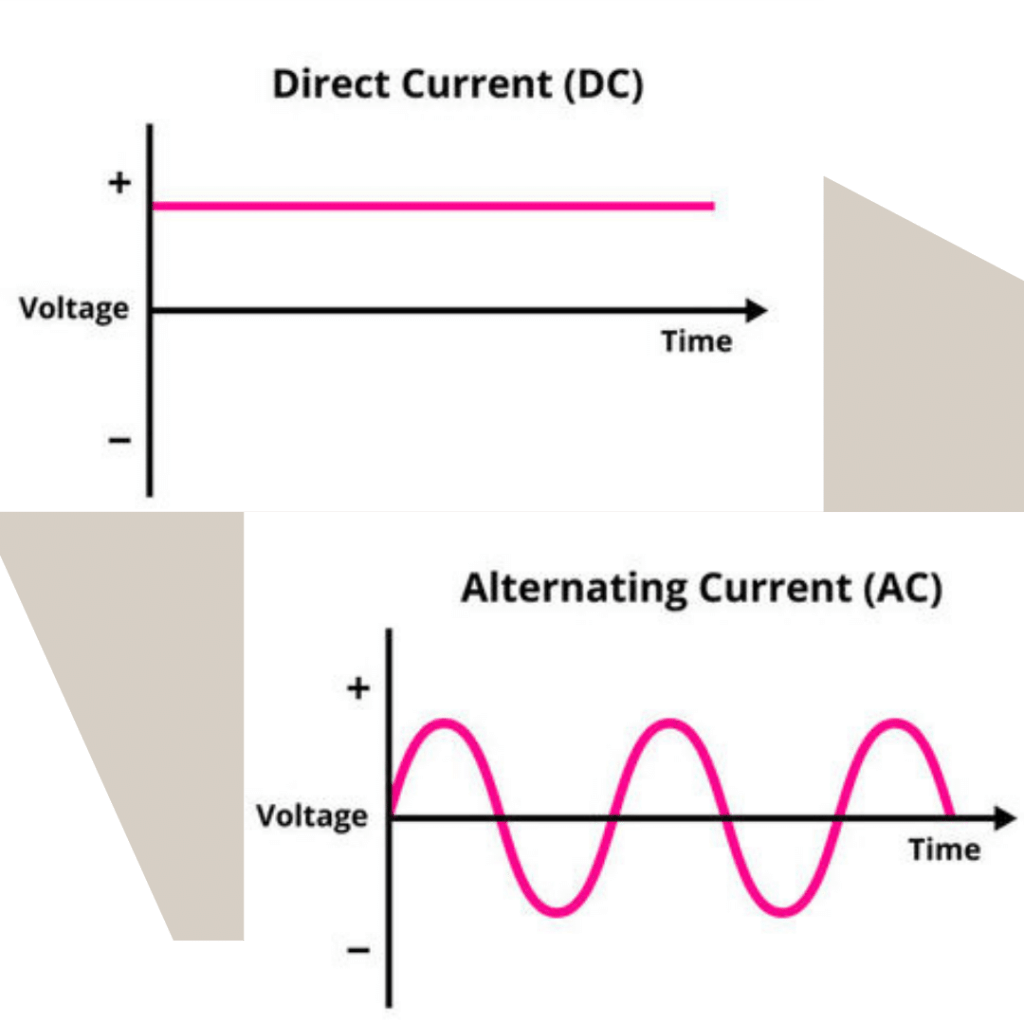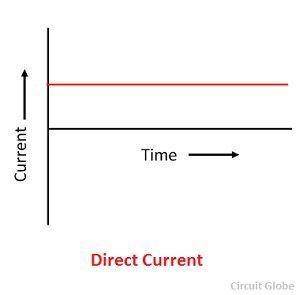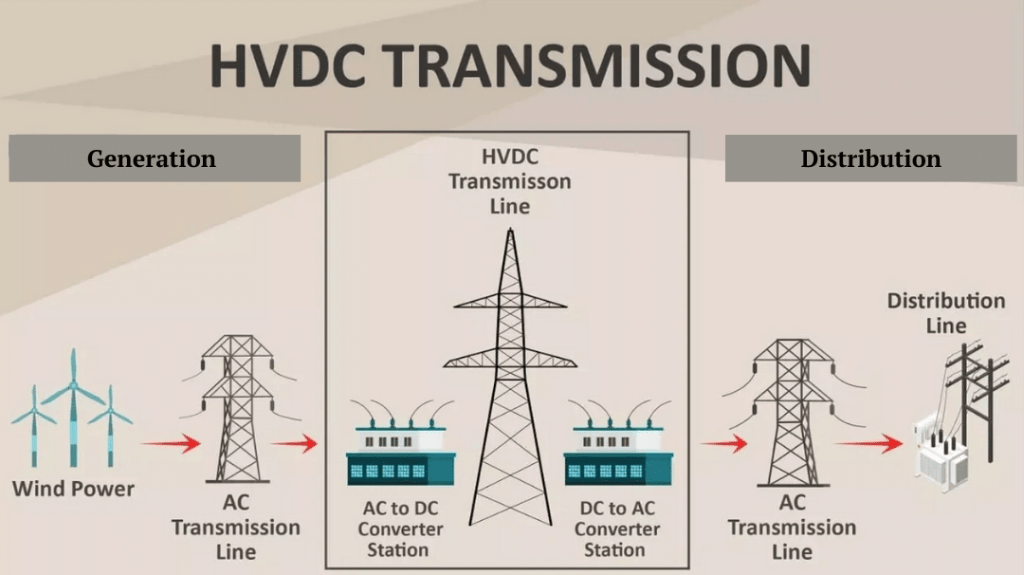The battle between alternating current (AC) and direct current (DC) has been a topic of interest for over a century, often referred to as “alternating current vs direct current.” As the world advances and relies more on electrical power, understanding the differences, advantages, and applications of AC and DC power becomes increasingly important. Are you ready to dive into the electrifying world of AC and DC? This comprehensive guide will illuminate your understanding of these two currents, showcasing their unique characteristics and roles in modern power systems.

From the historic “Battle of the Currents” between Edison and Tesla to the cutting-edge technology of direct high-voltage current (HVDC), this guide will take you on a journey through the world of electricity, focusing on alternating current vs. direct current. By the end of this post, you will have a newfound appreciation for the power that fuels our everyday lives and a deeper understanding of the two currents that make it all possible.
Short Summary
- AC power is widely used for large-scale power distribution, while DC power is essential for powering smaller devices and electronics.
- HVDC technology provides increased transmission capacity and reduced losses in long-distance applications.
- AC & DC are utilized in modern systems to maximize the efficiency, reliability, and sustainability of electricity transmission & distribution.
Understanding Alternating Current (AC)
An alternating current (AC) is an electrical current that changes its direction cyclically and periodically changes the voltage. AC can produce various waveforms, such as sine, square, and triangle waves, making it suitable for long-distance power transmission and electric motors. Compared to direct current (DC), AC power is more cost-effective to generate and more efficient for long-distance transmission[1], making it the preferred choice for power plants.
AC power is utilized in most large-scale power distribution systems, as it can be converted to and from high voltages with transformers. This results in minimal energy loss during electrical power transmission. The average power consumption of a 60-W light bulb is 60 W, and power is transmitted at high voltages to reduce power losses in the transmission lines.
AC Waveforms
AC waveforms encompass sine, square, and triangle waves, essential in various applications, including the functioning of a DC power supply. A sine wave is a smooth, repeating waveform frequently utilized in power distribution. It can be converted into a constant DC voltage using rectifiers. Square waves are regularly employed in digital and switching electronics to evaluate their performance, ensuring a constant voltage output.
On the other hand, Triangle waves are utilized in sound synthesis and are beneficial for evaluating linear electronics such as amplifiers, which are essential components to generate power.
Understanding the different AC waveforms allows for a deeper understanding of the applications of AC power. From the smooth sine wave powering our homes to the precise triangle wave testing our electronics, each waveform plays a crucial role in delivering the electricity we depend on daily.
Advantages of AC
AC power offers several advantages over DC power, including being more cost-effective to generate, having higher efficiency, being transmitted across long distances with less energy loss, and being more suitable for high-power applications and high-voltage transmission. These advantages stem from the multiple methods of generation available for AC, including hydroelectric, wind, and solar power, which are commonly used in power plants.
AC is also more efficient for long-distance transmission, as it can be transmitted over long distances with reduced energy loss compared to DC. Furthermore, AC has the advantage of being easily converted into DC, which is necessary for many high-power applications and to generate power for various devices.
As a result, AC power has become the dominant force in the world of electricity, powering homes, businesses, and even entire cities around the globe.
Understanding Direct Current (DC)
Direct current (DC) is a type of electrical current in which the flow of electricity does not periodically change, instead flowing in one direction in a steady voltage. DC power is primarily used to provide power to electrical devices, charge batteries, and as a power source in a DC power supply. Devices that rely on DC include mobile phone batteries, flashlights, flat-screen televisions, and electric vehicles.
While AC power dominates large-scale power distribution systems, DC power remains essential for operating many smaller devices and electronics. The constant DC power voltage allows these devices to function efficiently, providing a reliable energy source for our everyday needs. In contrast, AC voltage plays a crucial role in long-distance electricity transmission.
Generating DC Power
DC power can be generated through various methods, including batteries, generators, or by converting AC power using rectifiers. DC generators, such as solar panels and permanent magnet motors, are the primary source of direct current. DC provides an efficient way to power electronic equipment. It can also be stored in batteries, making it a versatile and reliable energy source for various applications.

The ability to generate DC power through multiple methods ensures a consistent electricity supply for our portable devices and off-grid appliances. From the solar panels on our rooftops to the batteries in our smartphones, DC power generation plays a vital role in our modern, technology-driven world.
Advantages of DC
DC power offers many advantages, such as providing consistent electricity that is not influenced by variances in the power supply. Additionally, DC does not produce reactive power, which can lead to power losses in AC systems. One of the most significant benefits of DC power is its ability to be conveniently stored in batteries, facilitating energy storage and transportation.
These advantages make DC power a popular choice for various applications, from powering portable devices to storing energy in batteries for later use. As technology advances, the importance of DC power in our daily lives will only grow, powering our devices and making our lives more connected and convenient.
The Battle of the Currents: AC vs. DC
The late 19th century saw the “Battle of the Currents,” a conflict between AC and DC distribution systems. Thomas Edison launched a campaign to discourage the use of AC in the United States, lobbying state legislatures and disseminating false information about AC. At the same time, Nikola Tesla advocated for AC as the best power distribution method. The confrontation between Edison’s DC system and Tesla’s AC system resulted in AC emerging as the more efficient solution for long-distance power distribution, thus becoming the dominant method.
This historical battle between the two titans of the electrical world shaped the future of power distribution, leading to the widespread adoption of AC power for its efficiency and versatility. As we continue to rely on electricity in our daily lives, the legacy of this battle lives on in the AC and DC systems that power our world.
Edison’s Direct Current System
Edison’s Direct Current System was a method of delivering electricity to homes and businesses using direct current. It was formed in the late 1870s to power Edison’s lightbulbs. However, Edison’s DC system proved inadequate for long-distance power transmission, as it was inefficient and resulted in significant power losses.
As a result of its limitations, Edison’s DC system gradually lost ground to Tesla’s AC system, which offered greater efficiency and versatility in power distribution. Today, while DC power still plays an essential role in powering small devices and electronics, AC power dominates the landscape of large-scale power distribution.
Tesla’s Alternating Current System
Tesla’s AC system, backed by George Westinghouse, utilized transformers for efficient long-distance power transmission and became the prevailing power distribution method. Westinghouse acquired Tesla’s patents for AC motors and transmission, paving the way for the widespread adoption of AC power. The primary benefit of Tesla’s AC system was its ability to employ transformers for effective long-distance power transmission, outperforming Edison’s DC system in efficiency and versatility.
The success of Tesla’s AC system marked a turning point in the history of power distribution, as AC power became the standard for delivering electricity to homes, businesses, and industries worldwide. Today, Tesla’s vision of efficient, long-distance power transmission remains at the heart of modern electrical systems.
Applications of AC and DC Power
AC and DC power have different applications in our modern world. AC power is typically distributed in residential, commercial, and industrial settings, as it can be converted to and from high voltages using transformers. This enables efficient long-distance power transmission, supplying factories, homes, and buildings with the necessary electricity.
On the other hand, DC power is widely employed in portable devices and off-grid appliances, providing a reliable energy source for a vast array of electronics. From charging our mobile phones to powering our electric vehicles, DC power is essential to the technology that shapes our daily lives.
AC Power Applications
AC power is commonly used in home and office outlets, electric motors, and large-scale power distribution systems. It is utilized for long-distance power transmission, supplying factories, homes, and buildings. Additionally, AC power drives electric motors in appliances such as dishwashers and refrigerators. Learn more about how Energy Efficient Appliances improve the home’s value.
AC power is an integral part of our daily lives, from lighting up our homes to powering the appliances that make our lives more convenient. Its ability to be transmitted over long distances and its compatibility with a wide range of devices make it the cornerstone of modern power distribution systems.
DC Power Applications
DC power is used in digital electronics, batteries, portable devices, and electronic components. It is employed in low-voltage applications, such as charging batteries, automotive applications, aircraft applications, and other low-voltage, low-current applications. DC power is also utilized in solar panels, DC motors, and DC-DC power supplies.
From powering our smartphones to storing energy in batteries for later use, DC power is an indispensable part of our modern, technology-driven lives. Its stable voltage and storage ability in batteries make it ideal for many applications, ensuring that our devices are always ready to keep us connected and on the go.
High-Voltage Direct Current (HVDC) Technology
High-Voltage Direct Current (HVDC) technology offers advantages in long-distance power transmission and has become increasingly popular in modern power systems. HVDC is an electric power transmission system that utilizes direct current (DC) for electric power transmission instead of the more traditional alternating current (AC) transmission systems. This system is often employed when power is transmitted over extended distances or to draw power from offshore wind farms.

As our world continues to evolve and the demand for efficient power transmission grows, HVDC technology is poised to play an increasingly important role in our modern power systems. Its ability to transmit power with reduced losses and increased capacity makes it an attractive solution for meeting the energy needs of our rapidly changing world.
Advantages of HVDC
HVDC offers benefits such as reduced power losses, increased transmission capacity, and the ability to connect asynchronous power grids. It reduces power losses by utilizing higher voltages, minimizing the current required to transmit the same amount of power. HVDC also augments transmission capacity by allowing more power to be transmitted through the same amount of wire. Additionally, HVDC enables asynchronous power grids to be connected, allowing for power transfer between grids without requiring synchronization.
These advantages make HVDC technology attractive for long-distance power transmission and integrating renewable energy sources into our grid. As our world continues to pursue clean, efficient, and reliable sources of electricity, HVDC technology will play a crucial role in shaping the future of power transmission.
HVDC in Modern Power Systems
HVDC is now used worldwide, including in Europe and the United States, to improve power transmission efficiency and grid stability. It is primarily utilized for extended-distance bulk power transmission and submarine cables, augmenting power transfer capacity and efficiently coupling asynchronous power systems.
The increasing prevalence of HVDC technology in modern power systems highlights its potential to revolutionize how we transmit and distribute electricity. As our world continues to demand more efficient, reliable, and sustainable power sources, HVDC technology will play a critical role in meeting these needs and shaping the future of our energy landscape.
Summary
In this comprehensive guide, we have explored the fascinating world of alternating current (AC) and direct current (DC), delving into their unique characteristics, advantages, and applications. From the historical “Battle of the Currents” to the cutting-edge technology of high-voltage direct current (HVDC), we have seen how AC and DC power have shaped our world and continue to play crucial roles in our daily lives.
As we move forward into an increasingly electrified future, the importance of understanding AC and DC power cannot be overstated. Whether it’s the AC power that lights up our cities or the DC power that keeps our devices charged, these two currents will remain fundamental forces in our modern world, powering our lives and driving our technological progress.
Frequently Asked Questions
Why do we use AC instead of DC?
Due to its advantages, AC has become the preferred choice of power source worldwide. Specifically, AC is easier to convert into higher or lower voltages than DC, making it more reliable and cost-effective.
Thus, AC is the more popular option for most applications.
What is the difference between DC and AC?
Direct current is an unchanging type of electricity where the voltage remains constant and the current flows in a single direction. In contrast, alternating current periodically changes voltage and direction, meaning the charge constantly reverses direction.
As such, alternating current is ideal for large-scale applications like power grids.
Does the US use AC or DC?
The US primarily uses alternating current (AC) for electricity. However, there are some applications in which direct current (DC) is also used. In particular, computers, LEDs, solar cells, and electric vehicles run on DC power.
Converting direct current to higher and lower voltages is also possible. Therefore, both AC and DC are present in the US.
Which is better, alternating current vs. direct current?
Overall, alternating current (AC) is generally considered superior to direct current (DC) since it is more efficient and can easily be converted from one voltage to another. AC also has fewer safety issues than DC, making it the preferred choice in most applications.
What is the main difference between AC and DC power?
The fundamental difference between AC and DC power is that AC changes direction and voltage cyclically. At the same time, DC maintains a constant flow of current in one direction and has a steady voltage.

